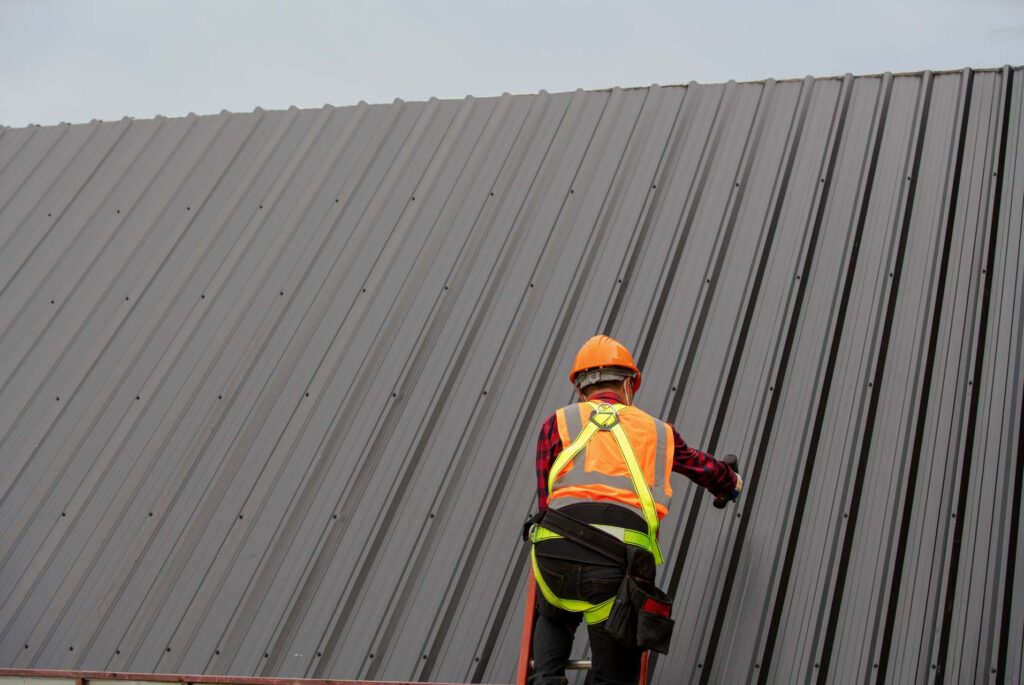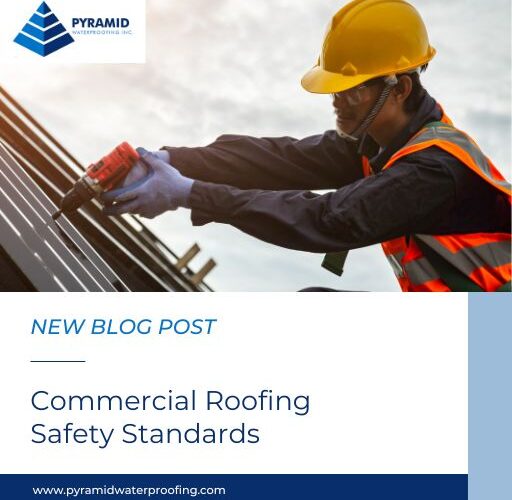Commercial Roofing Safety Standards
Our team installs, repairs, and maintains commercial roofs on warehouses, office buildings, retail plazas, and more. Many of these structures have low-slope and flat roofs that require specific precautions and safety measures. Commercial roofing can be hazardous, given the height of the buildings and exposure to weather conditions, but with the proper training and planning the risk of injury or accident is significantly reduced. Before we start a roofing job, we make sure that our team is equipped with safety training and equipment and in compliance with all roofing safety standards and codes.
Commercial Roofing Hazards
Because of the height of commercial buildings, falls are a significant concern when it comes to roof hazards. If the roof or platform becomes slippery or the employee loses their balance, a fall can result in injury or death. Electrocution and burns are also concerns when working on commercial roofs. Many times workers are installing hot asphalt or using torches. Faulty wiring in the roofing components or equipment can cause electrocution if the proper protective equipment isn’t worn. Workers are also exposed to the elements, such as heat and storms. Without planning in advance, this could cause serious issues and injury.
Roofing Safety and Best Practices
Inspecting Equipment – Regularly checking installation and maintenance equipment, such as tools, ladders, machinery, and personal protective wear, is important to prevent injury and misuse. If any equipment is not functioning properly or shows signs of damage, our team repairs or replaces it.
Fall Prevention – There are a few fall prevention techniques that can be used in combination with each other. It is important to set up fall prevention measures before beginning a roofing installation or repair. Guardrails or warning flags are installed around the perimeter of the roof to mark the edge. Safety nets are used to catch people or objects that could go over the roof. Personal Fall Arrest Systems (PFAS) are harnesses attached by a line to an anchorage point. The PFAS can support a person’s body weight if they were to fall off the edge of the roof.

Employee Training – It is important that every employee is equipped with the knowledge of roof safety and regulations. This will help the whole team protect themselves and others on the job. We make sure that all members of our roofing team are well-trained and knowledgeable before working on commercial buildings.
Weather-Related Illnesses and Injuries – Houston can get hot, especially in the summer. With rising temperatures comes a higher risk of heat exhaustion, heat stroke, and dehydration. Our team is trained in recognizing the symptoms in themselves and others and taking preventive measures to cut down on the risks. Checking the weather for rain and thunderstorms is also an important part of planning roof installations and repairs. Working in these conditions not only compromises the roofing material, but can increase the slipperiness of the roof and electrical hazards.
Who sets the roofing safety standards and codes?
The Occupational Safety and Health Administration (OSHA) is a federal agency that sets safety regulations. This organization enforces codes and standards for the commercial roofing industry as well as construction and other industries.
When you choose Pyramid Waterproofing for your roofing needs, you can rest assured that we are in compliance with roofing safety standards and our employees have the proper safety training. Contact us to learn more through our website here.
